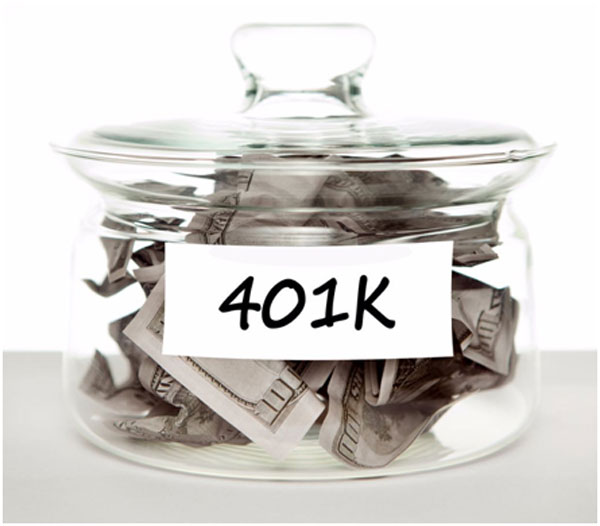
The 401(k) plan was invented roughly 35 years ago and has grown into a benefit that most employees expect. A 401(k) plan gives employers and employees a flexible way of saving for retirement.
A 401(k) is a plan that lets employees invest a percentage of their income into a retirement savings plan. Those contributions are then invested through mutual funds, bonds, stocks, savings accounts, money market funds, and other accepted options. The big benefit is that employees can save and invest that money from their paychecks without getting a hit from taxes. Generally, taxes don’t have to be paid on the money until a withdrawal is made from the account, saving the employer and employee on taxes.
There are a number of types of 401(k) plans that employers can choose from. The most common plan may be the traditional 401(k) plan, which allows employers to make contributions to an employees’ plan. This plan focuses on loyal employees, meaning the matching contributions may be forfeited if an employee leaves the company before a pre-specified duration. Employers cannot discriminate against employees, ensuring that their contributions are the same for all employees. A self-directed 401(k) plan is similar to a traditional plan except the employee acts as the fund manager. A safe harbor 401(k) plan is generally more expensive and differs from the traditional plan because the employer contributions are non-forfeitable. In this plan, the employer contribution cannot exceed 5 percent of the employees’ compensation. This plan is also not subject to non-discrimination tests like the other plans are. A tiered profit sharing 401(k) plan works for companies with 50 employees or less and making a substantial amount of profit. The employees get classified in groups and then rewarded based on those groups, roles and salaries. A simple 401(k) plan is best for companies with 100 employees or less that earn at least $5,000 yearly. The employer and employee contributions are fully vested and the plan is free of non-discrimination testing from the IRS.
Unlike a pension fund, employers are not required to make contributions into their employees’ 401(k) accounts. This puts the employee in charge of their retirement investments. However, many employers opt to match their employees’ contributions to a certain percentage or use profit-sharing arrangements to make contributions. Any extra contributions by the employer are at their discretion and can be changed at any time.
Employees find 401(k) plans as an attractive benefit because it is an easy way for them to invest and save for their retirement without taxes taking a large chunk of their income. Employers like offering 401(k) plans because they can also make tax deductions on their contributions to an employee’s 401(k) account.
The IRS has strict guidelines for 401(k) plans, including the contribution limits, distribution rules, and limits for high-income earners. When it comes to contribution limits, they are determined by the annual amount for employee contributions and the total contributions. Those employees over the age of 50 may make “catch-up” contributions up to a total amount. The money in a 401(k) plan can grow without a tax hit but must meet certain conditions for a withdrawal, such as death, disability, separation from employment, retirement, or are 59.5-years-old or experiencing a hardship. Employees that earn several hundred thousands of dollars a year can only put a portion of their earnings into their 401(k) plan based on the maximum contributions.
This year the contribution limits for an employee is $18,000. Those employees that are 50 by the end of this year or older can make catch-up contributions of up to $6,000. The maximum employer/employee joint contributions went up to $54,000 or $59,000 for those employees 50 and older.
As an employer, there are administration services at your disposal. There are retirement plan professional and financial institutions out there that can manage the plan but you must make sure they are responsibly managing it. When shopping around for a service, find out what services they offer and the compensation they receive from you, the employee, and any third parties. Check into their financial situation, their business practice, and the quality of the services they provide. A history of legal action or performance problems should be a red flag. Once you have selected a firm to manage your 401(k) plan, continue reviewing documents, service level agreements, and reports.
Small companies may find it intimidating to offer a 401(k) plan when there are so many government rules and regulations in addition to the cost of providing the benefit. A small business has enough on their hands trying to manage and grow their company that adding on what can be a confusing retirement savings plan is more than they can handle. However, small business owners need to be thinking about their own retirement in addition to that of their employees. There are also tax deductions that companies can use that will pay off in the end. Perhaps the biggest benefit for small companies that offer a 401(k) plan is the attraction it provides to top talent to come work for your company. The best employees know that they are good and want to be treated as such with benefits so offering even a lost cost 401(k) plan is something for them to use to save for their retirement.
The father of 401(k) plans has developed a new plan targeting small businesses. The Benna 401(k) plan guides small business owners through the process of setting up the plan while avoiding significant fees. Ted Benna said in an interview with the Post Bulletin that “It typically costs $1,000 to $1,500 to set up a 401(k) and $1,000 to $3,000 in annual administrative fees for small employers. The new Benna 401(k) plans do not have any set-up or administrative fees, and your employees will have access to a wide range of investment opportunities for only 0.25 percent or less, a small fraction of typical 401(k) plan packages.” Benna wants to see more U.S. workers with retirement plans.
There are costs that go into 401(k) plans but the benefits for the employer and employee outweigh the negatives. As an employer that is considering whether to provide a 401(k) retirement plan for its employees, careful consideration of the type of plan is needed.
Photo: flickr.com
See the following articles for more information:



